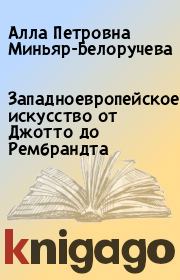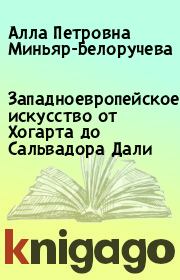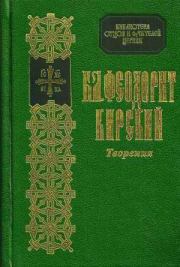Алла Петровна Миньяр-Белоручева - Западноевропейское искусство от Джотто до Рембрандта
пособие для изучающих английский язык | Название: | Западноевропейское искусство от Джотто до Рембрандта |
Автор: | Алла Петровна Миньяр-Белоручева | |
Жанр: | Языкознание, Изобразительное искусство, фотография | |
Изадано в серии: | неизвестно | |
Издательство: | неизвестно | |
Год издания: | - | |
ISBN: | неизвестно | |
Отзывы: | Комментировать | |
Рейтинг: | ||
Поделись книгой с друзьями! Помощь сайту: донат на оплату сервера | ||
Краткое содержание книги "Западноевропейское искусство от Джотто до Рембрандта"
Учебный центр
«Московский Лицей»
пособие для изучающих английский язык
издание второе переработанное и дополненное
Москва -1999
Рецензенты:
И. И. Малинина кандидат филологических наук
Н. В. Васютина кандидат филологических наук
РЕКОМЕНДОВАНО кафедрой иностранных языков исторического факультета МГУ им. М. В. Ломоносова
Тексты настоящего пособия охватывают пять веков западноевропейской живописи от Джотто до Рембрандта. Это дает возможность обучаемым приобрести не только лингвистические знания, усвоив обширный лексический материал, но и культурологические, поскольку последовательный хронологический переход текстов от одного художника к другому позволяет создать более или менее целостную картину развития западноевропейской искусства с XIII по XVII вв. Система упражнений направлена на усвоение лексического материала и развитие навыков устной речи.
Данная книга является первой частью цикла учебных пособий для изучающих английский язык и предназначена для студентов-искусствоведов, учащихся классических гимназий, лицеистов и всех интересующихся искусством.
© Миньяр-Белоручева А. П.
© Оформление «Московский Лицей», 1999
ISBN 5-7611-0181-5
Издательство «Московский Лицей» Адрес: Москва, Ярославское ш., д.2, корп. 1
Телефон: (095) 188-59-71
Факс: (095) 188-33-10
Печ. л. 8,0. Тираж 5000 экз.
Читаем онлайн "Западноевропейское искусство от Джотто до Рембрандта". [Страница - 5]
The centre of the ceiling is Mantegna's most astonishing perspective prank. We seem to be looking up into a circular parapet as up through the mouth of a well, above which are sky and clouds. Winged children clinging to the parapet are seen in sharp perspective from front and rear, and across one end runs a pole, which if it rolled a bit, would allow a large tub of plants to fall on our heads. Ladies-in-waiting, including one black servant, peer over the edge, smiling at our discomfiture. With this odd beginning commences the long series of illusionistic ceiling and dome paintings that continued for three centuries and spread from Italy throughout Europe.
In the long bas-relief-like painting the Introduction of the Cult of Cybele into Rome Mantegna reveals his sculptural tendencies and grave attitude to classical antiquity. His figures take on the rigidity of stone. The Madonna and Child with Magdalen and S. John the Baptist Mantegna painted with a simulated marble framing. As through a window the observer meant to look at these statue-like figures whose draperies fall into heavy folds.
Late in life Mantegna painted the Dead Christ on canvas and in scurto (extreme foreshortening), intended not as a trick in this case but as a device to bring home to the observer the personal meaning for him of Christ's sacrificial death. The weeping Mary and John are likely later additions.
Mantegna was a printmaker. Seven engravings by his hand and many by his followers established a graphic art tradition in the late fifteenth century in northern Italy.
Make sure you know how to pronounce the following words:
Mantegna; Mantua; marquis, burial; martyrdom; montage; castle; Cybele
Notes
Saint James Led to Execution – «Шествие Святого Иакова на казнь»Martyrdom of St James – «Мученичество Святого Иакова»
Burial of St. Christopher – Перемещение тела Святого Христофора»
Assumption – «Вознесение Марии»
Dead Christ – «Мертвый Христос»
Introduction of the Cult ofCybele into Rome – «Учреждение культа Кибелы в Риме»
Madonna and Child with Magdalen and S. John the Baptist – «Мадонна с Младенцем, Магдалиной и Святым Иоанном Крестителем»
Crucifixion – «Распятие»
Tasks
I. Read the text. Mark the following statements true or false.1. In 1454 Mantegna alone began a series of frescoes.
2. In 1944 all Mantegna's frescoes were destroyed.
3. Mantegna initiated illusionistic ceiling paintings.
4. A simulated marble framing is Masaccio's innovation.
5. The Crucifixion is a long bas-relief-like picture.
6. Mantegna painted the Dead Christ on panel.
II. How well have you read? Can you answer the questions?
1. Where did Mantegna paint a series of frescoes in 1454? What frescoes survived? What does the photo-montage show?
2. What is represented in Assumptions?
3. What is a triumph of Renaissance spatial construction? What do the figures in this painting recall? Where did Mantegna place the observer? What effect did he achieve by this device?
4. What frescoes did Mantegna finish in 1474? What is depicted there? What was Mantegna's prank? What does it picture?
5. What did Mantegna introduce in the Madonna and Child with Magdalen and S. John the Baptist? How did the observer mean to look at the figures? What were Mantegna's innovations?
6. What device did Mantegna use in the Dead Christ? Why?
III. I. Give Russian equivalents of the following phrases:
the cove of the apse; a background perspective; statue-like figures; early works; simulated marble framing; in the apse; heavy folds; vaulted ceiling; the figures recede; the emotion of the moment; a device; to render the three-dimensional illusion; to spread throughout Europe; marmoreal hardness; a bishop; ladies-in-waiting; a long bas-relief-like picture; animated statues; martyrdom; a prank; in perspective; sculptural tendencies; to peel off; to peer over the edge; to bring home to the observer; to bless.
II. Give English equivalents of the following phrases:
в центре конхи; ожившие статуи; мученичество; в конхе апсиды; княжество; мраморная тяжесть; вытянутая, напоминающая барельеф картина; скульптурные тенденции; нарисованная мраморная рама; фигуры, похожие на статуи; донести до зрителя; передать объем; фрейлины; придворная жизнь; распространиться по всей Европе; фоновая перспектива; сводчатый потолок; забавная шутка; выглядывать из-за перил; потолочная роспись.
III. Make up sentences ofyour own with the given phrases.
IV. Here are descriptions of some of Mantegna's works of art.
Match them up to the given titles…
1. This fresco is a triumph of Renaissance Classicism.
2. The Apostles stand below against the sides of the arch.
3. The frescoes represent scenes from contemporary court life.
4. Mantegna painted Christ foreshortened.
5. It is noted for the novelty of its background perspective.
6. It demonstrates Mantegna's high level of perfection.
a. Dead Christ
b. Burial of St. Christopher
c. Assumption
d. Martyrdom of St. James
e. Saint James Led to Execution
f. The Gonzaga frescoes
V. Translate the text into English.
Андреа Мантенья, крупнейший художник-монументалист падуанской школы. В своих работах он любил изображать античные памятники и развалины. В капелле Оверати Мантенья изобразил историю Св. Иакова, как реальное событие. По заказу мантуанских правителей Мантенья расписал одну из комнат дворца. Художник представил семейный портрет Гонзаго и сцены из придворной жизни Мантуи. Фреска плафона, изображающая в самом центре свода круглую галерею с людьми, смотрящими сквозь перила, является первой иллюзионистической декорацией в западноевропейском искусстве. Именно с нее начинается многовековая традиция потолочной росписи в Европе.
VI. Summarize the text.
VII. Topics for discussion.
1. Mantegna's style and characters.
2. Mantegna's artistic innovations.
Книги схожие с «Западноевропейское искусство от Джотто до Рембрандта» по жанру, серии, автору или названию:
 |
| Эрик В Гуннемарк - Искусство изучать языки Жанр: Языкознание Год издания: 2001 |
 |
| Алла Петровна Миньяр-Белоручева - Западноевропейское искусство от Джотто до Рембрандта Жанр: Языкознание Год издания: 1999 |
 |
| Арсений Владимирович Гулыга - Искусство в век науки Жанр: Культурология и этнография Год издания: 1978 Серия: Философия, экономика, право |
 |
| Николай Федорович Замяткин - Вас невозможно научить иностранному языку Жанр: Языкознание Год издания: 2008 |
Другие книги автора «Алла Миньяр-Белоручева»:
 |
| Алла Петровна Миньяр-Белоручева - Западноевропейское искусство от Джотто до Рембрандта Жанр: Языкознание |
 |
| Алла Петровна Миньяр-Белоручева - Западноевропейское искусство от Хогарта до Сальвадора Дали Жанр: Языкознание |



